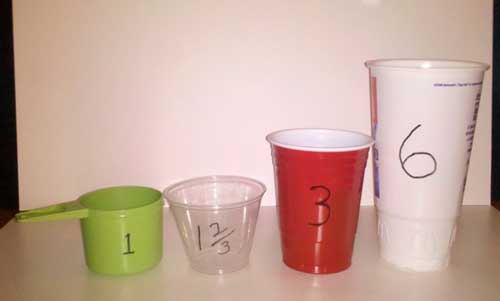It is Not WHAT We Feed Our Pets but HOW We Feed Them That is Making Them Fat
The combination of treats, "people scraps," and feeding by the "cup" are major causes of obesity in pets. All lead to feeding too many calories.
Treats
According to studies, 59 percent of owners feed their dogs "people scraps." (Not "table scraps." Who eats from a table?) Don’t get me wrong. I have no problems with feeding people food to pets. The problem is accounting for the calories in the treats and scraps. A piece of cheese, meat or cookie could add as many as 50 to 100 calories. For a small dog, that could be half of its total daily calorie requirement! Raw vegetables like broccoli, carrots and beans are virtually calorie free because the calories necessary to digest them cancel out the calories they contain. Cooked vegetables, fruits, berries, and melons have slightly more calories, but when limited for use as treats and rewards — or limited to 1/4 or 1/3 of a cup per day — add nice variety to the diet. These treats probably won’t work for cats. We will discuss cat treats another time.
The “CUP”

Although pet food labels clearly state "8 oz. measuring cup," owners are inclined to translate the meaning of a "cup" differently. The three containers to the right of the green measuring cup were called "a cup" by various clients. The numbers on each container indicate the actual number of measured cups each can hold.
The tendency is to feed to the size of the food bowl, despite instructions. Bigger bowls look empty. Food bowls should be the smallest possible size without making eating difficult.
But even owners who follow label instructions often overfeed. Feeding instructions on pet food are based on weight. Few owners know the weight of their pets, and it is difficult to get an accurate weight using a bathroom scale, especially for large dogs. Every overestimation of one pound can result in overfeeding by 53 calories. Owners with an accurate knowledge of their pets’ weight can still overfeed due to the range of "cups" in the feeding instructions for each weight category. So what is the answer?
Count the calories, not the cups
- Most veterinarians do not charge for weighing pets and an accurate weight is a must before you can calculate your pet’s daily energy requirement (kcal/day). Once the weight is known, a pet’s daily calorie requirement can be calculated. For neutered, inactive pets the daily energy requirement (DER) is:
- [30 x (Weight (lbs.) ÷ 2.2) + 70] x 1.2 = DER (kcal or calories/day)
If your pet is overweight, these calculations do not apply. Overweight animals need calorie restrictions and special foods. Feeding the overweight pet is the subject of upcoming posts. - Weigh the food on a kitchen scale. Weighing is far more accurate than measuring. You will need to find the kcal/kg of the food. Pet food companies are not required to provide this on the packaging. If it is not available on the package, the company website will have it. The formula to determine the amount to feed is:
- (DER kcal ÷ kcal/kg) x 1000 = grams to feed per day*
- (* to convert to ounces divide the number of grams by 28)
If your pet’s Body Condition Score increases with this volume of food, cut back in 10 percent increments every two weeks until he/she maintains a perfect BCS. If the BCS decreases, add food in 10 percent increments.

Dr. Ken Tudor
Image: karam Miri / via Shutterstock
